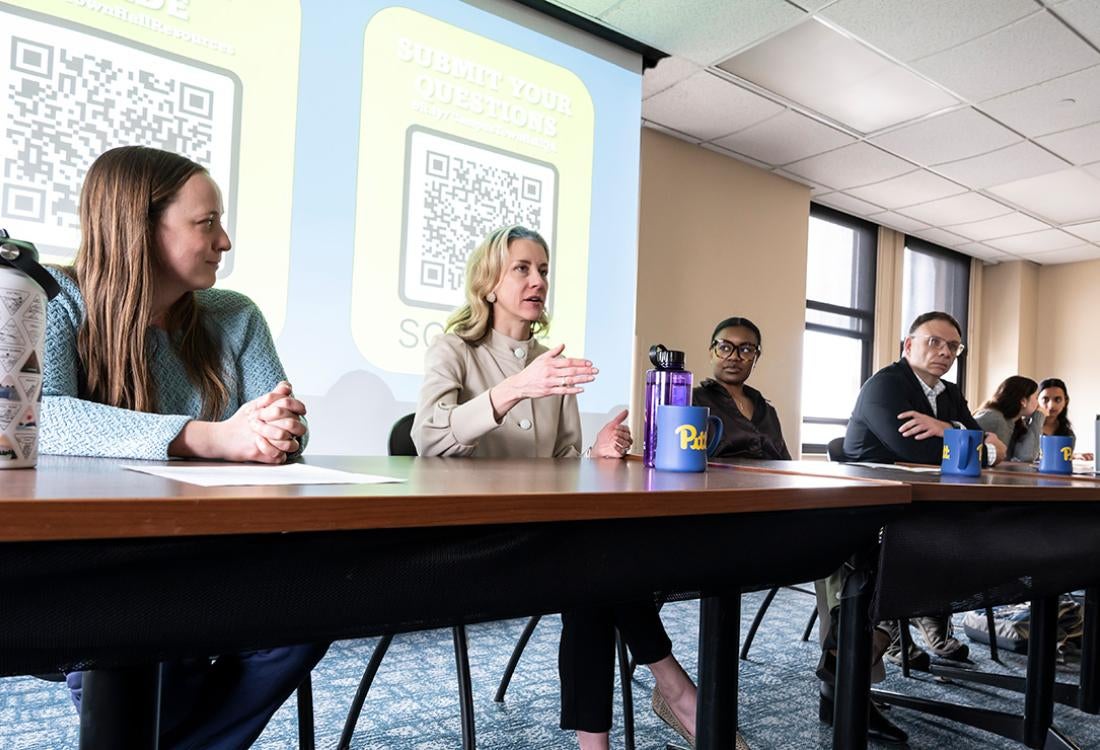The Pittsburgh Water Collaboratory and Women for a Healthy Environment join forces to investigate local water systems

The region is deep into a summer drought. Lawns are scorched brown, rivers are running low and water authorities are dipping into their reserves. Unless the skies open soon, those reserves are likely to be depleted within days, leaving tens of thousands of people without water in their taps.
It sounds like a scenario built for a Southern state, but as the experts know, it could happen just about anywhere in the country, including Western Pennsylvania.
And it’s not the only looming threat to water.
Parched summers, industrial pollution and aging water infrastructure have led to significant water challenges in the United States, including depleted reserves, source water contamination and corroding water pipes that leach hazardous chemicals like lead.
Pitt is helping to address the region’s water issues through the Pittsburgh Water Collaboratory, a multidisciplinary research organization whose goal is to elevate water resource sustainability and resilience through community engaged collaboration.
One of those collaborators, Michelle Naccarati-Chapkis, executive director of Women for a Healthy Environment (WHE), says Pitt’s Water Collaboratory has been an invaluable partner. Back in 2019, her nonprofit organization commissioned a study of Allegheny County’s water quality to determine how the region would fare under proposed EPA rules to reduce lead in the nation’s water supply. She says WHE’s study yielded concerning results: 80% of the county’s water systems reported detectable lead in their drinking water and many lacked resources for a fix. They also study analyzed operational and communications capacity, information transparency, adherence to drinking water quality standards and strategies to reduce lead in drinking water — subjects that require further study.
“We needed a part two,” Naccarati-Chapkis says.
The Water Collaboratory ensured that part two would happen, thanks to its impressive network of more than 100 partner organizations, undergraduate and graduate students, researchers and faculty affiliates from the University’s School of Health Sciences, Swanson School of Engineering, Kenneth P. Dietrich School of Arts and Sciences and Graduate School of Public and International Affairs.
Armed with streamlined internal funding through Pitt Momentum Funds, the Water Collaboratory and WHE built upon WHE’s initial work, recently surveying and issuing report cards for the county’s 36 water systems.
That report, called Measuring Up, focused on three areas: water quality, affordability and transparency practices. While some systems earned better grades than others, the collective results weren’t dean’s list material.
“No system surveyed met best practices for transparency or affordability. That, for me, was pretty alarming,” says Megan Lange, the Water Collaboratory’s outreach coordinator.
“Alarming” because the two measures have far-reaching effects for customers. Transparency is the water system’s ability to provide accessible information on how it makes decisions, receives complaints and communicates water issues or threats. The survey found smaller city or municipal water systems were more likely to perform poorly, and that could leave customers without the knowledge needed to keep their families safe.
“There are places that do a good job, but if you’re in a smaller system, you generally have fewer employees, and that means each employee has to do a wider range of jobs,” explains Daniel Bain, associate professor in the Department of Geology & Environmental Science and the faculty vice-chair of the Collaboratory.
To Bain, just as concerning as transparency is affordability. The survey revealed a high number of residential shutoffs among some water systems. In one community, 26% of customers lost service after missed payments, a statistic Bain calls “abysmal.” And, as water rates in the county rise, partly from replacement costs of lead pipes to meet EPA regulations, that shutoff rate will likely increase.
To combat that concern, the repeat team has proposed a moratorium on shutoffs and a renewed commitment to public water systems.
WHE and the Water Collaboratory are doing their part on the ground, too, distributing water filters, giving residents a blueprint for demanding quality water from their suppliers, and speaking at meetings, including one recently on Pitt’s main campus. Billed as a Water Town Hall, participants included representatives from the Water Collaboratory, WHE, Pittsburgh Water and Sewage Authority, Pittsburgh City Council and student organizations.
Although the findings noted by WHE’s study and Measuring Up seem ominous, Naccarati-Chapkis says the mere existence of those reports is reason for optimism.
Together, she says, they provide accountability, offer baseline data for future comparison and make Allegheny County residents aware of what’s coming out of their faucets.



